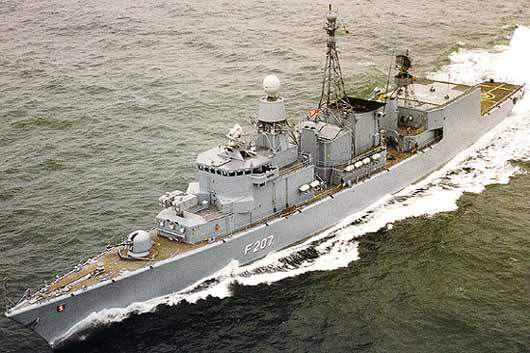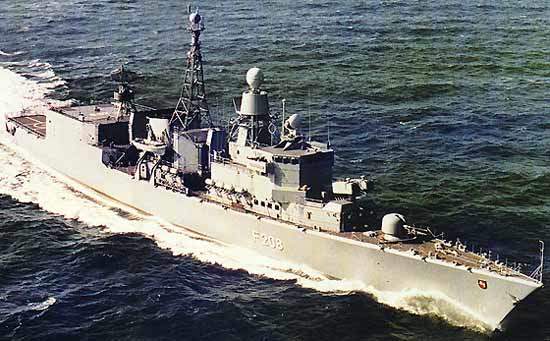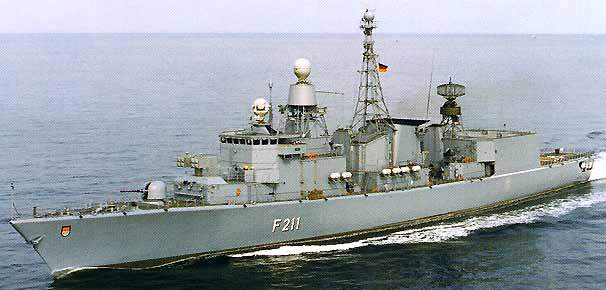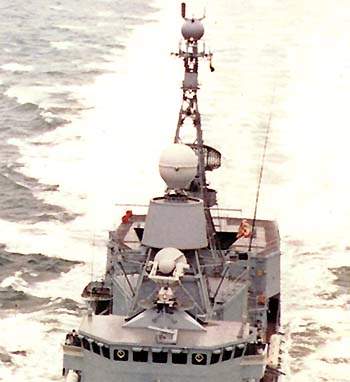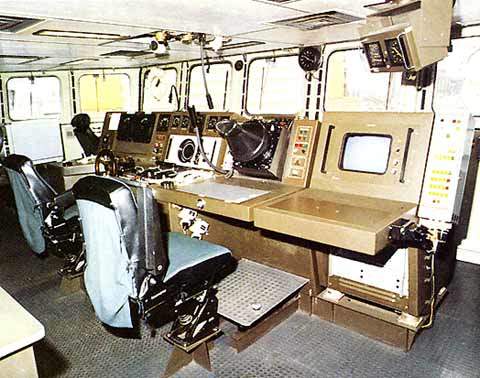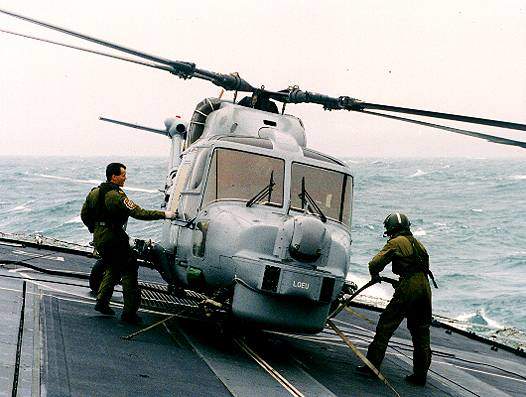The German Navy has eight Bremen Class frigates designed and built by Bremer Vulkan in the 1980s. The ship’s primary role is for operation within the Nato and German task forces. The ship is designed primarily for anti-surface warfare missions with strong anti-air and anti-submarine warfare capability.
The first of class, Bremen (F207), was commissioned in 1982; Niedersachsen (F 208) in 1982; Rheinland-Pfalz (F 209) in 1983; Emden (F 210) in 1983; Koln (F 211) in 1984; Karlsruhe (F 212) in 1984; Augsburg (F213) in 1989 and Lubeck (F214) in 1990.
The successor to the Bremen class is the F125 Baden-Württemberg class.
Command and control
The ship’s combat system integrates the target acquisition, navigation, communications, signal processing and weapon control functions. The combat system software was developed by ATLAS Elektronik.
The combat system central computer computes and evaluates the target data and allocates data to the weapon systems. The system carries out multiple target search and track, target prioritisation and automatic engagement of weapons.
The German Navy began an upgrade programme for the combat system on the eight Bremen Class (F122) and four Brandenburg frigates. A contract was awarded to Thales in September 2005 to provide a new open architecture system to replace the SATIR. The upgrade was completed in 2011. IBM supplied and installed the Link 16 capability enhancement and also installed the EADS Defence Electronics multifunctional information distribution system (MIDS).
Missiles
The Bremen has two four-cell Boeing Harpoon missile launchers. Harpoon (RGM-84) is an anti-surface missile, with active radar seeker and range of 130km.
The ship’s point defence system is based on the medium-range Nato Sea Sparrow and the short range RAM (rolling airframe) missile. The Sea Sparrow surface-to-air missile is launched from two mk29 eight-cell launchers mounted side by side at the fore of the ship, above and behind the Otobreda gun. The RAM (RIM-116A), supplied by Raytheon and RAM Systems GmbH, is installed at the aft of the ship above the helicopter deck.
Guns
The ship is equipped with a 76mm Oto Melara anti-air and anti-surface gun. The gun is capable of a firing rate up to 85 rounds a minute to a range of more than 15km. Two 20mm guns model Rh202 from Rheinmetal are installed port and starboard.
Torpedoes
The ship is equipped with two 324mm mk32 twin torpedo tubes and eight DM 4A1 or mk46 mod 2 torpedoes from ATK (AlliantTechsystems).
Helicopters
The ship accommodates two 4.5t class helicopters, the Sea Lynx mk88 from AgustaWestland. The helicopters are equipped with AQS-18D dipping sonar from L-3 Communications – Ocean Systems and two torpedoes type mk46 or type DM4. Handling tests on the helicopters have been successfully carried out up to wind force 8. The hangar provides space, facilities and equipment for the maintenance of two helicopters. The flight deck is large enough for landing a Sea King type helicopter.
Countermeasures
The electronic warfare suite includes the FL 1800 S-II integrated electronic countermeasures and support measures developed by DaimlerChrysler Aerospace (now EADS Systems & Defence Electronics). The ship’s decoy system is the Super RBOC (super rapid blooming offboard countermeasures) decoy launcher from Sippican Hycor. The towed torpedo decoy is the SLQ-25 Nixie.
Sensors
The ship’s radar systems include the Thales Nederland (formerly Signaal) DA 08, air / surface search radar. The DA 08 is scheduled to be replaced by the EADS Systems & Defence Electronics TRS-3D air and surface search radar, to improve the close-in weapon system (CIWS) capability.
The ship’s navigation radar is the SMA 3 RM20 operating in I band. The fire control radars are the I/J band WM25 and the I/J/K band STIR radars from Thales Nederland. The bow sonar dome is fitted with a rubber window for the hull mounted search sonar, the DSQS-21 from Atlas Elektronik. The DSQS-21 operates in active and passive mode up to high sonar frequencies.
In November 2007, EADS Defence Electronics was contracted to supply the MSSR 2000 IFF Mode S information friend or foe (IFF) system for installation on Bremen Class frigates.
Propulsion
The combined diesel or gas turbine propulsion system, CODOG, consists of two gas turbines GE type LM2500 for maximum speed, and two diesel engines MTU type 20 V 956 TB 92 for cruising. The reduction gearboxes were supplied by Renk Tacke and BHS Getriebetechnik. The five-bladed controllable pitch propellers from Sulzer-Escher Wyss GmbH are low-noise propellers.

